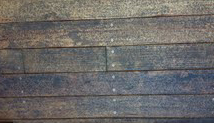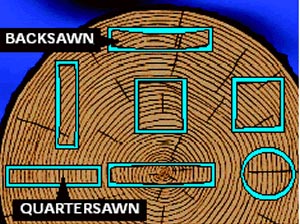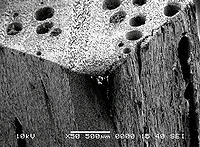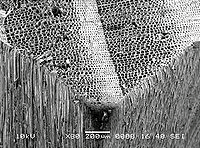Wood projects using clear CUTEK® oil that have silvered can easily be returned back to the wood’s original colour using CUTEK® Restore and high pressure washing followed by further applications of CUTEK® clear oil.
However, if you desire to maintain the original colour of the wood then you need to purchase a CUTEK® Colourtone suited to your selected wood which will further enhance the natural colour and grain and help to maintain its “natural” colour over a longer period of time.
NOTE: CUTEK® is unable to offer any specific performance warranties in relation to colour retention for CUTEK® products because of many variables related to the weathering process including but not limited to: the age and porosity of the wood, species, situation, design and structure, aspect, differing exposure to the weather, method of application and adequacy of preparation.
What to expect when using CUTEK® Colourtones
Most wood care products on the market leave a build up of material on the surface of the wood. In the short term this provides more colour, but in the long term the finish can be prone to peeling and flaking, which requires time and money to repair.
The CUTEK® system is unique as it will fade over time rather than peel or flake. The initial CUTEK® Colourtone build on new smooth wood projects only offers subtle amounts of pigment that enhance the wood. Timber that’s exposed fully to the weather will lighten faster as the wood acclimatises over the first six months. A follow up application after this initial weathering period will provide much greater Colourtone build as the wood becomes rougher and more open.
How to increase colour build on new wood
New wood is milled smooth and often has a mill glaze which will greatly restrict the initial colour build. Better results can be achieved by creating a rougher surface and preparing the wood using CUTEK® Restore in combination with a high pressure washer. Sanding the new wood to 80 grit will give even better results as it removes mill glaze and creates a much rougher surface which will enable higher colour build.
NOTE: The rougher the surface of the wood, the greater the colour build and durability. Rough sawn or heavy brushed wood profiles will take more oil and colour so much bolder colour contrast can be achieved. The amount of mill glaze if any that is present on any job can vary significantly depending on species density, and machining method used. Note, sanded surfaces should be vacuumed or washed thoroughly to remove all loose wood and dust.
Select CUTEK® Colourtone
Our CUTEK® Colourtone system is designed to enhance the wood colour and grain you select. With this in mind, you need to think about your original wood choice and the colour it most represents. Is it light to Golden, Brown, Red or a combination? Here are a few common examples to help you understand:
Black Butt and Silver Top Ash: Light tones so Rustic Gold is a good choice
Spotted Gum: Light creamy to brown and greys so Rustic Gold and Sela Brown will all look similar on new smooth wood.
Merbau and Red Iron Bark: Rred to brown tone so Autumntone, New Bronzetone, Merbau or Burnt Red will all look very similar on smooth wood.
Forest Reds and Jarrah: Red tones so Autumntone, New Bronzetone and Burnt Red are all close options and will look similar on smooth wood.
Changing the original colour of any wood
For horizontal walk on surfaces such as decking, we recommend you select a CUTEK® Colourtone that is the closest match to the wood you have selected, rather than attempt to change the colour. You can talk to any of our stockists for advice.
For cladding and screening, a much higher build of colour can be achieved which can completely change the original tone of the wood. Even very light wood coloured species can become an almost solid Black, Grey, Red, Brown or Gold if the wood surface is suitably rough and more coats or a higher pigment loading has been added.
In some circumstances you can double your CUTEK® Colourtone to achieve bolder effects on rough or brushed wood. We advise that you contact us to discuss this option in more detail as we want to ensure you have the best information possible.
Application
One CUTEK® colourtone size can be used in all pack sizes as follows:
- 1 x 180 ml CUTEK® Colourtone pot is required for a 5 litre can of CUTEK® oil.
- 2 x 180 ml CUTEK® Coloutone pots per 10 litre can of CUTEK® oil.
- 4 x 180 ml CUTEK® Colourtone pots per 20 litre can of CUTEK® oil
Stir and mix the CUTEK® Colourtone well before adding into the clear oil. Continue to stir well with a flat stirrer, lifting from the bottom, for about 2 minutes before use and give a quick stir about every 15 minutes during use to ensure even results.
For best results, one coat of clear CUTEK® oil should be applied to all faces of the wood prior to installing, with a second and third coat of colourtoned CUTEK® oil applied to the top surface once the first coat is completely dry. Two or three thin coats on finished wood and hardwoods are better than one or two thick coats. CUTEK® oils will take longer to absorb/penetrate into dense hardwoods so thin coats are best so as to avoid delayed drying of the oil.
Maintenance
Colourtoned CUTEK® oil will lighten/fade faster in full weather exposed areas whereas wood in protected areas will retain colour with minimal maintenance over time.
CUTEK® is designed to gradually fade over time rather than peel, split or crack. Rejuvenation of faded timbers coated with CUTEK® oils is a simple, fast and cost-effective process.
Clear or Colourtoned CUTEK® oil should be reapplied as frequently as necessary to retain the natural beauty and colour of the wood. Assessment of this is subjective and it is important to realise that colour durability varies widely according to many factors including the age and porosity of the wood, species, situation, exposure to the weather and how rough the wood surface is.
Typically, horizontal exterior wood surfaces exposed to full weather such as pool decks and handrails will require re-coating more frequently (initially after 6 months, then annually), while other surfaces such as vertical rough-sawn cladding will need recoating less often.



 Factors that significantly affect the drying, appearance and dimensional integrity of dried timbers are:
Factors that significantly affect the drying, appearance and dimensional integrity of dried timbers are:

